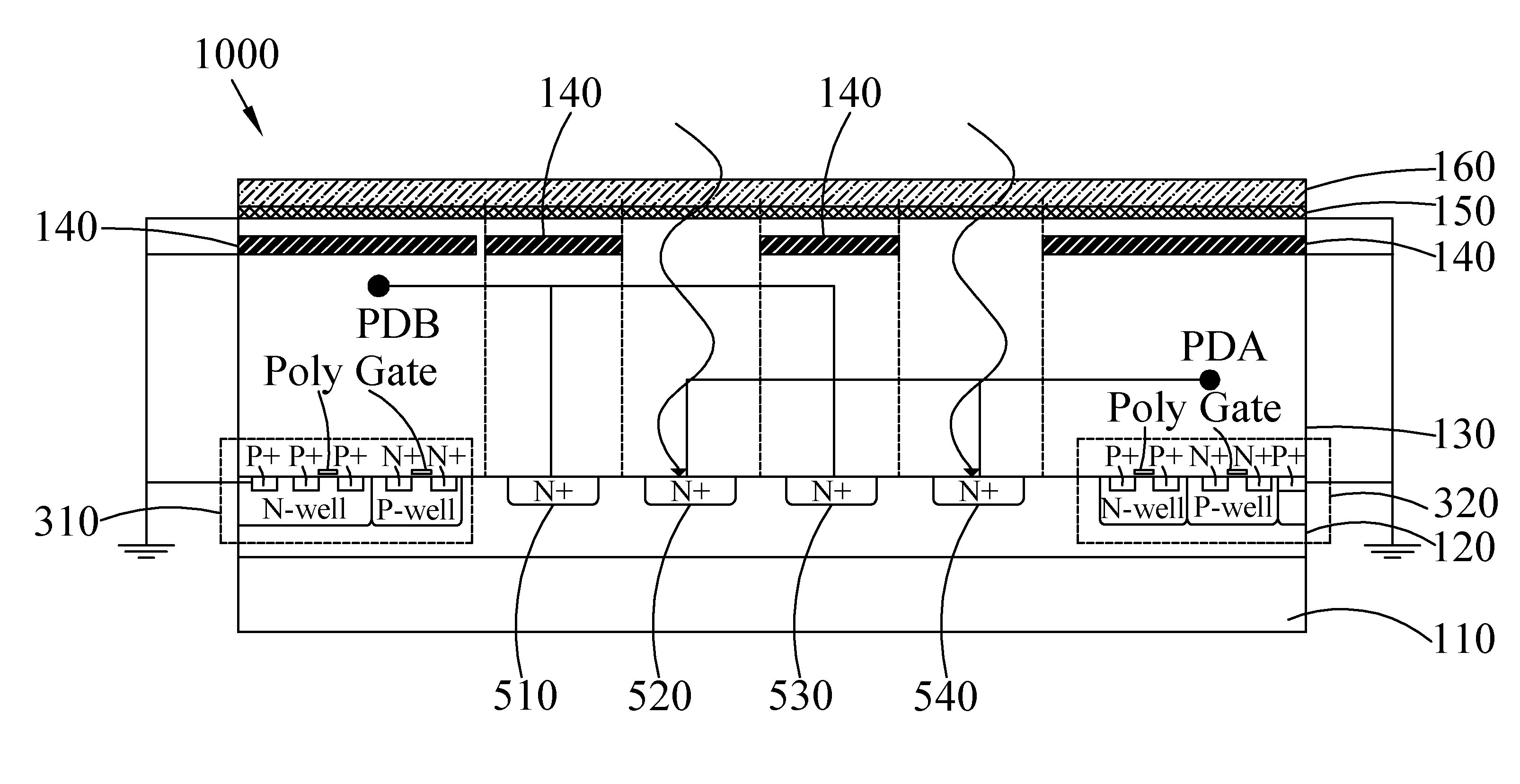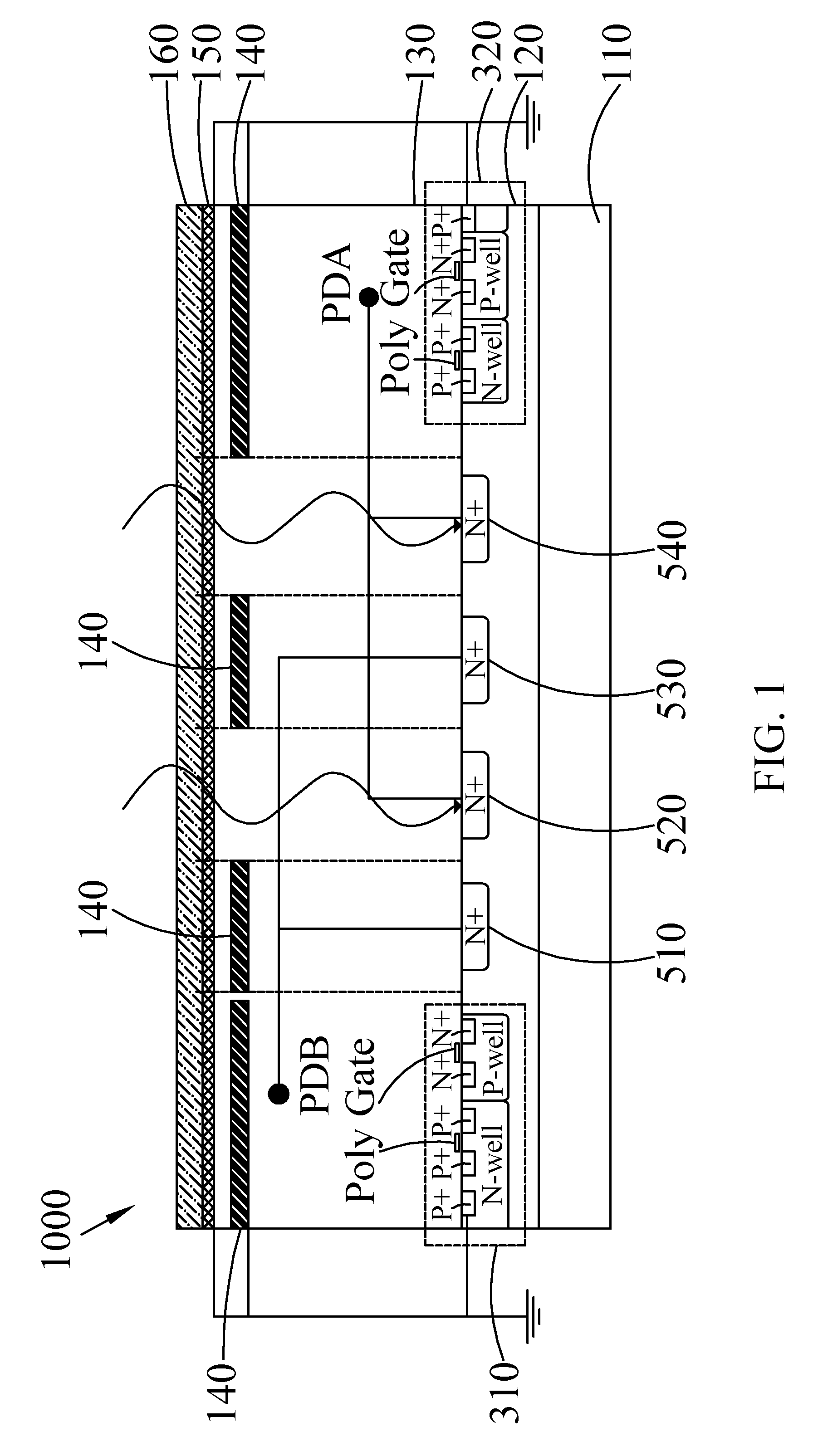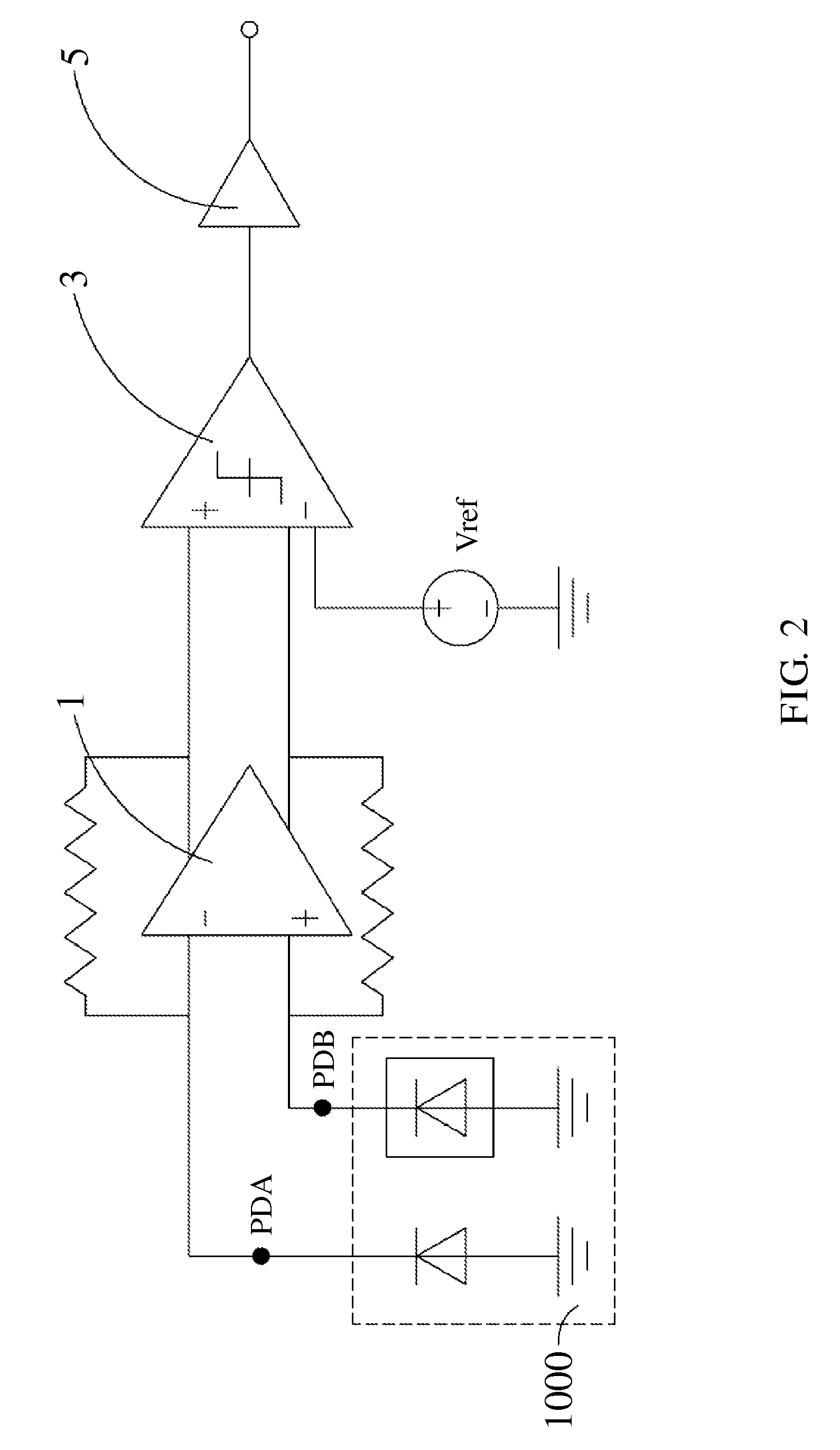Photo-coupler device
a photo-coupler and photo-coupler technology, applied in the field of photo-coupler devices, can solve the problems of poor voltage conversion efficiency and common-mode transient resistance, inaccurate reception signals, and easy reduction of electrical conductivity of the photo-coupler structure, and achieve low resistance values, good transmittance, and good voltage conversion efficiency
- Summary
- Abstract
- Description
- Claims
- Application Information
AI Technical Summary
Benefits of technology
Problems solved by technology
Method used
Image
Examples
first embodiment
[0036]With reference to FIG. 1, in which a schematic diagram of the photo-coupler device according to the present invention is depicted. In FIG. 1, the photo-coupler device 1000 comprises a P-type substrate 110, a P-type epitaxial layer 120, an insulating layer 130, a plurality of shielding layers 140, a metal layer 150 and a passivation layer 160. The P-type epitaxial layer 120 is deposited on the P-type substrate 110. The insulating layer 130 is deposited on the P-type epitaxial layer 120. The shielding layers 140 are deposited in the insulation layer 130 in parallel in a horizontal direction. The metal layer 150 is deposited on the insulation layers 130. The passivation layer 160 is deposited on the metal layer 150.
[0037]The P-type epitaxial layer 120 further comprises two conducting regions 310, 320 and a plurality of N+ electrode regions between the two conducting regions 310, 320, and in which two of the shielding layers 140 are correspondingly arranged for covering the two co...
second embodiment
[0045]With reference to FIG. 3, in which a schematic diagram of the photo-coupler device according to the present invention is depicted. In the embodiment, the photo-coupler device 2000 comprises a P-type substrate 210, a P-type epitaxial layer 220, an insulating layer 230, a plurality of shielding layers 240, a metal layer 250 and a passivation layer 260. The P-type epitaxial layer 220 is deposited on the P-type substrate 210. The insulating layer 230 is deposited on the P-type epitaxial layer 220. The shielding layers 240 are deposited in the insulation layer 230 in parallel in a horizontal direction. The metal layer 250 is deposited on the insulation layers 230. The passivation layer 260 is deposited on the metal layer 250.
[0046]According to the above, the P-type epitaxial layer 220 further comprises two conducting regions 410, 420 and a plurality of N+ electrode regions between the two conducting regions 410, 420. Wherein, the plurality of shielding layers 240 correspondingly co...
PUM
 Login to View More
Login to View More Abstract
Description
Claims
Application Information
 Login to View More
Login to View More - R&D
- Intellectual Property
- Life Sciences
- Materials
- Tech Scout
- Unparalleled Data Quality
- Higher Quality Content
- 60% Fewer Hallucinations
Browse by: Latest US Patents, China's latest patents, Technical Efficacy Thesaurus, Application Domain, Technology Topic, Popular Technical Reports.
© 2025 PatSnap. All rights reserved.Legal|Privacy policy|Modern Slavery Act Transparency Statement|Sitemap|About US| Contact US: help@patsnap.com



